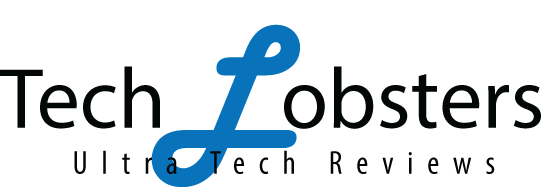By 2025, organizations will use low-code/no-code platforms to build 70% of their applications. The push for digital transformation has prompted the rise of enterprise apps, with organizations globally pivoting towards no-code to create more custom, flexible apps matching company requirements.
It has helped businesses manage the intense pressure to digitize, encouraged innovation, and is rapidly changing how organizations exploit market opportunities, meet changing customer needs and survive in a dynamic business environment. No-code architecture has democratized software development, empowering non-technical users to create and modify apps quickly.
But even with this, only 24% of businesses have implemented no-code/low-code process automation solutions. If you’ve been wondering how to cut costs, save time, and increase your competitive advantage, here’s how no-code platforms can boost business agility.
What is no code?
No code is an approach to app development that empowers non-IT users without programming expertise to create robust, user-friendly, fully-functional apps without writing any code. These platforms have a highly-visual environment with drag-and-drop elements and drop-down menus to build apps of varying complexity and fulfill business needs.
No-code platforms are customizable, completely code-free, designed for all users, and focus on ideas rather than technical or development expertise. Non-IT professionals use practical, reusable building blocks to execute their ideas in hours and days. No code is a quick and simple way to help organizations standardize processes and update their IT solutions.
How no-code platforms boost business agility
No-code tools help organizations solve business problems, enhance productivity, and achieve objectives with speed and agility. They also:
1. Lower operating costs
With no code, businesses don’t have to spend a chunk of money on coding to build workflow software. It reduces legacy system bottlenecks such as lengthy approval processes for new applications, central IT checks, internal procurement review, and aligning budgets.
No-code application development eliminates the need to outsource apps and hire expensive IT developers. It helps organizations create custom apps with a lower ownership cost and reduce the software development cycle. No-code apps also have low maintenance costs.
Maintaining legacy systems is time-consuming with complex coding procedures that significantly drain IT resources and company funds, affecting an enterprise’s bottom line.
Redundant legacy systems, limited visibility into app usage, duplications of features, and ongoing license fees create inefficiencies and a significant financial burden for organizations.
2. Reduce dependency on IT
Traditional work environments require involving IT teams at every step, with developers determining everything about applications and business teams accepting it. No-code development lessens dependency on software engineers and IT specialists by empowering business users to produce apps. It frees under-resourced IT experts to focus on more complex, critical, operations-driven work that grows the business.
IT resources and infrastructure are extremely expensive, and most organizations cannot afford them. While no code is not a replacement for IT developers, it demolishes structural barriers making non-IT employees without specialized knowledge part of the app development process. It places them in a co-creative role, enabling them to develop and deploy solutions in an IT-approved environment.
By increasing the pool of developers, businesses can reduce project backlogs and save time and money. No-code platforms also heighten the autonomy of non-IT teams, motivating them to build much-needed business applications that integrate into core business systems without relying on IT.
3. Eliminate shadow IT
Conventional work settings usually have some disconnect between IT teams and business teams, with IT teams often keeping things siloed and amplifying this chasm. Business users shift to external software without consulting the IT department to achieve faster and more effective solutions to their problems. But, no-code offers business users the freedom to develop IT solutions and bring their ideas to life in collaboration with IT and a development environment sanctioned by IT.
The platform promotes transparency and cross-team collaboration, reducing the risks associated with shadow IT. When they have the autonomy to create apps within established IT guardrails, business users become more creative, building reliable, credible, high-quality apps that work better.
4. Smoother and faster time to market
Now more than ever, customers expect seamless, omnichannel product experiences and quick delivery. But because of the pressure to deliver and match the rising demand, IT developers often sacrifice function for speed.
No-code platforms streamline app development, empowering employees to innovate quickly, address their problems more efficiently, and maximize their potential. They quicken the pace of app development and deployment time, unleashing new levels of productivity and efficiency.
No code enables organizations to use APIs and connect to external enterprise systems, automate processes, expand access to data, and create apps faster without compromising quality. The platform’s rich functionality and visual interfaces bridge the gap between ideas and prototypes, helping organizations deliver apps faster with less hassle.
How no code has helped organizations: FD Works case study
FD Works is an accounting firm in Bristol, England with a unique approach to finance. It provides services such as payroll, account management, tax review, and financial modeling to financial agencies and other businesses. The company is keen on building active and engaging relationships with its clients. Its vision is to give smaller, agile, and creative businesses exceptional accountancy support.
Previously, FD Works was collecting data on Airtable, but it needed a custom tool it could manage without an in-house IT team or outsourcing to a developer. With a no-code platform, the company assembled a robust digital data portal, which offered permission-based access for the internal team and clients. It was a secure way for both teams to access data and increase internal collaboration.
Heighten your company’s agility with no code
No-code platforms are slowly becoming mainstream technology. They eliminate the complexity associated with app development, drive innovation, and motivate employees. They’re faster, more efficient, and an easy way to enable employees to imagine and innovate seamlessly. While they don’t replace coding or IT developers, no code solutions empower non-IT professionals to become developers.
With proper governance structures, you can reduce dependency on IT, maximize resources, enhance customer experience, and accelerate development. It’s a simple way to transform your organization, unlock value, save money, and help business users solve their unique challenges.


